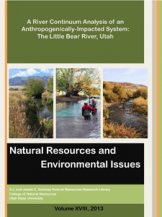Utah Environmental Issues
March 12-18 is Sunshine Week, recognized by journalists and nonprofits as a time to focus on and highlight the importance of government transparency. This year, we’re providing how-to guides to explain which records Utahns ought to have access to, according to state laws. These records have a number of critical public-facing purposes, including protecting consumers and preserving civil liberties.
What is the record?
The Utah Department of Environmental Quality has digitized most of its records on environmental response and remediation sites. It’s easy to see what environmental issues have happened in your area — and how many cleanups are ongoing — by using their interactive map.
What are some ways it’s useful?
Does that gas station down the street have a leaking underground tank? Do you ever wonder if that historical smelter you heard about blew contamination into your soil? How much cleanup was involved in remediated the old Ogden Railroad Yard? How many Superfund sites are in your neighborhood? The Utah DEQ’s interactive map can answer many of these questions and provide information on the environmental history state as well as records on current cleanup efforts.
Where can you get it?
Under “Query Layers, ” selected “Environmental Response and Remediation” and select the options you’re curious about. Under “Define Search Criteria, ” select whether you want to search statewide, or a specific city, county or address.
Colored dots will appear on the map indicating sites on the Utah DEQ’s radar because they have issues that have either been addressed or are being investigated.
Selecting a site gives basic information about the situation. Clicking the “links” option to the left, then “documents, ” takes you to scanned public records for the site. These records include a plethora of useful information, from groundwater monitoring reports, to soil sample resorts, to summary and assessment reports to closure letters certifying the site no longer poses a threat.
Useful terms
Some background in environmental laws and definitions is helpful when researching environmental response and remediation documents.
Brownfields — A site where redevelopment is hindered by its past use as an industrial or commercial site and possible lingering contamination from the activities.
CERCLA — Sites listed under the Comprehensive Environmental Response, Compensation, and Liability Act. These are sites where the federal government had to respond because of an issue endangers public health or the environment. Polluted properties that need long-term cleanup and response get bumped up to the National Priorities List. It’s also sometimes called the “Superfund, ” which is a fund set aside to clean heavily polluted sites.
Enforceable Written Assurances — This is an agreement that the UDEQ won’t bring an enforcement action against a property owner for an environmental issue as long as they meeting certain criteria.
Toxic Release Inventory — Certain industrial sites must report the amount of toxic chemicals they release into the environment and the facility’s management of toxic materials. This information is compiled the Toxic Release Inventory database.
Underground Storage Tanks – Commercial properties like gas stations, auto body shops and industrial sites with an underground storage tank must report to the state and conduct regular testing. The underground storage tank database also includes information about leaking tanks, removed tanks and tanks found abandoned.





